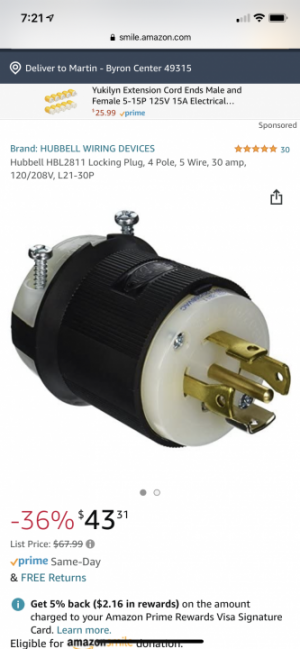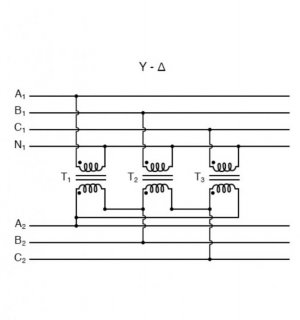- Joined
- Jan 4, 2021
- Messages
- 987
I'm still a bit new to all of this, and I searched for this question, but couldn't find if anyone specifically asked what I would like to know.
I'm adding some three phase equipment to the shop. A couple of these machines will be in the middle of the shop floor. My intention is to build or buy a rotary phase converter and then use an extension chord from the RPC to power either one of these machines. One of the machines has a 120V power feed. Plus, it would be nice to have task lighting.
What does it take to step down the 240v three phase to 120v single phase for the power feed and lighting? Should I run yet another extension chord? Can I use a step down transformer, and if so, an example of something on which I could research more?
I saw James Clough add a step down transformer for his mill, but the $175 price tag for the transformer seems a little excessive when there must be other options. I know machine manufacturers do this all the time for control circuitry. I'm looking for a less expensive but an equally safe and adequate solution.
Disclaimer: I'm not a complete ignoramus as it relates to electricity, I know it can be dangerous and it can kill me. I am just looking to be pointed in the right direction for this specific application.
I'm adding some three phase equipment to the shop. A couple of these machines will be in the middle of the shop floor. My intention is to build or buy a rotary phase converter and then use an extension chord from the RPC to power either one of these machines. One of the machines has a 120V power feed. Plus, it would be nice to have task lighting.
What does it take to step down the 240v three phase to 120v single phase for the power feed and lighting? Should I run yet another extension chord? Can I use a step down transformer, and if so, an example of something on which I could research more?
I saw James Clough add a step down transformer for his mill, but the $175 price tag for the transformer seems a little excessive when there must be other options. I know machine manufacturers do this all the time for control circuitry. I'm looking for a less expensive but an equally safe and adequate solution.
Disclaimer: I'm not a complete ignoramus as it relates to electricity, I know it can be dangerous and it can kill me. I am just looking to be pointed in the right direction for this specific application.


